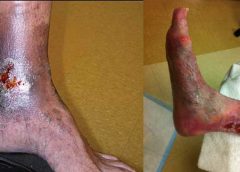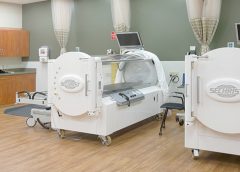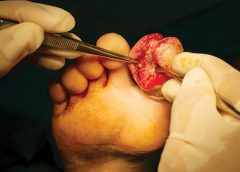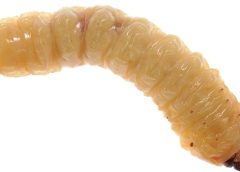The cutting-edge of wound care is a progressively flexible one, where textiles, foams, and films are applied to wound management technology with the goal of synergistic physiological function. These innately intuitive materials underpin the emerging medical solutions that practitioners and their patients are finding more effective than traditional wound care and closure methods. With an aging population more frequently seeking medical care and a surge in diabetes diagnoses, market analysts predict a continuing rise in demand for advanced wound care management products, fueling an annual industry growth rate of 6.4% over the next five years. (more…)
Read MoreCategory: Resources
Managing chronic venous leg ulcers — what’s the latest evidence?
Chronic venous leg ulcers (CVLUs) affect nearly 2.2 million Americans annually, including an estimated 3.6% of people over the age of 65. Given that CVLU risk increases with age, the global incidence is predicted to escalate dramatically because of the growing population of older adults. Annual CVLU treatment-related costs to the U.S. healthcare system alone are upwards of $3.5 billion, which are directly related to long healing times and recurrence rates of over 50%.
CVLUs are not only challenging and costly to treat, but the associated morbidity significantly reduces quality of life. That makes it critical for clinicians to choose evidence-based treatment strategies to achieve maximum healing outcomes and minimize recurrence rates of these common debilitating conditions. These strategies, which include compression therapy, specialized dressings, topical and oral medications, and surgery, are used to reduce edema, facilitate healing, and avert recurrence. (more…)
Read MoreClinician Resources: Pressure-Injuries, Ostomy, Lymphedema, Delirium
Here is a round-up of resources that you may find helpful in your practice.
New illustrations for pressure-injury staging
The National Pressure Ulcer Advisory Panel (NPUAP) has released new illustrations of pressure injury stages. You can download the illustrations, which include normal Caucasian and non-Caucasian skin illustrations for reference.
There is no charge for the illustrations as long as they are being used for educational purposes, but donations to support the work of NPUAP are appreciated. (more…)
Read MoreHyperbaric oxygen therapy as adjunct therapy for wound care
Why would a patient with a wound spend almost 2 hours a day, 5 days a week, in a locked chamber receiving 100% oxygen? The answer is that medical grade hyperbaric oxygen therapy (HBOT) can be a valuable adjunct therapy for selected types of wounds.
In this article, I’ll focus on hospitals and clinics that follow guidelines from the Undersea & Hyperbaric Medical Society as I give you a brief overview of how HBOT works and its use in wound care. (more…)
Preparing the wound bed: Basic strategies, novel methods
The goal of wound-bed preparation is to create a stable, well-vascularized environment that aids healing of chronic wounds. Without proper preparation, even the most expensive wound-care products and devices are unlikely to produce positive outcomes.
To best prepare the wound bed, you need to understand wound healing physiology and wound care basics, as well as how to evaluate the patient’s overall health and manage wounds that don’t respond to treatment. (See Normal wound healing.) (more…)
Read MoreWho can perform sharp wound debridement?
Nurses and therapists often wonder if their license permits them to perform sharp wound debridement. Scope of practice varies significantly from state to state, so it’s imperative to check your state for specific guidance, but we can address some of the challenges clinicians face in deciding whether they can perform this valuable service for patients.
Sharp debridement vs. other forms
Read MoreTool Kits
Click each title to download the tool kit PDF.
Alginate Dressing
Ankle Brachial Index
Diabetes foot examination
Debridement Tool
Job Task Analysis
Lanarkshire Oximetry Index
Plan-Do-Study-Act (PDSA) – Cycle Planning Sheet
PDSA Cycle Progress Sheet
PDSA Reporting Form
SBAR wound and skin provider communication record
Weekly Skin Assessment
Read MoreCase study: Maggots help heal a difficult wound
Using maggots to treat wounds dates back to 1931 in this country. Until the advent of antibiotics in the 1940s, maggots were used routinely. In the 1980s, interest in them revived due to the increasing emergence of antibiotic-resistant bacteria.
At Select Specialty Hospital Houston in Texas, we recently decided to try maggot therapy for a patient with a particularly difficult wound. In this case study, we share our experience. (more…)
Read MoreClinician Resources: human trafficking, npuap, caregiver, ostomy, HIV
Check out the following resources, all designed to help you in your clinical practice.
Human trafficking resources
Victims of human trafficking often suffer tremendous physical and psychological damage. Clinicians play an important role in identifying potential victims so they can obtain help.
Here are some resources to learn more about human trafficking.
• “Addressing human trafficking in the health care setting” is an online course that includes a downloadable quick-reference guide that can be saved and easily accessed from a mobile device to assist providers with essential information in the healthcare setting. (more…)
Read MoreExercise your right to be fit!
Nearly all clinicians know exercise is good for our physical and mental health. But incorporating it into our busy lives can be a challenge. The only types of exercise some clinicians have time for are working long shifts, juggling life’s demands, balancing the books, jumping on the bandwagon, climbing the ladder of success, and skipping meals.
Clinicians are in a unique position to help patients change their behavior to improve their health. Ironically, the first behavior clinicians need to change is to work toward improving our own exercise habits. (more…)
Read MoreNutritional considerations in patients with pressure ulcers
Optimizing nutritional status is a key strategy both in preventing and managing pressure ulcers. In patients across all care settings, compromised nutrition— as from poor intake, undesired weight loss, and malnutrition—increases the risk of pressure ulcers. It contributes to altered immune function, impaired collagen synthesis, and decreased tensile strength. In many cases, malnutrition also contributes to wound chronicity and increases the risk for delayed and impaired wound healing. In patients with chronic wounds, such as pressure ulcers, a chronic inflammatory state can induce catabolic metabolism, malnutrition, and dehydration. (more…)
Read MoreFAQs about support surfaces
Support surfaces are consistently recommended for the prevention and treatment of pressure ulcers. So patients can derive optimal benefits from support surfaces, clinicians must understand how to use them effectively. This article answers several questions about these useful tools. (more…)
Read More










